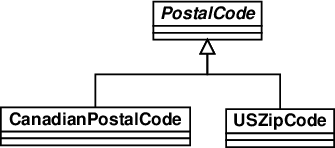
Let’s revisit the class Combination from laboratory 1. Make all the necessary changes to the class Combination (see below) so that it implements the interface java.lang.Comparable.
When two Combination objects are compared, the first pair of values is compared first, if the value of this object is smaller than that of the other then the method will return -1, if it is greater, then it will return 1, if those values are equal, then the second pair of values is considered, the value -1 or 1 will be returned if the second value of this object is smaller than that of the second, finally, if those values are also equal then the third pair of values is considered.
Comparable is part of a package, called lang, that is imported by default. Therefore, no need to import Comparable.
Write a test program for thouroughly testing your implementation.
This laboratory is about an implementation of the interface Stack as well as an application
Modify the interface Stack below adding an abstract method public void clear().
The class ArrayStack uses a fixed-size array and implements the interface Stack. Now that the interface Stack has been modified to have a method clear(), the current implementation of the class ArrayStack is broken (try compiling it without making any change, what is the error message displayed?).
Since the class ArrayStack implements the interface Stack, it has to provide an implementation for all the methods that are declared by the interface. Consequently, write an implementation for the method void clear(). It removes all of the elements from this ArrayStack. The stack will be empty after this call returns.
Submit your answer using Blackboard Learn:
For this part of the laboratory, you will experiment with two algorithms for validating expressions containing parentheses (round, curly and square parentheses).
The class Balanced contains a simple algorithm to validate expressions. Observation: for an expression consisting of well balanced parentheses the the number of opening ones is the same as the closing ones. This suggest an algorithm:
Compile this program and experiment. First, experiment with valid expressions, such as these ones “()[]()”, “([][()])”. Notice that the algorithm also works for expressions that contain operands and operators: “(4 * (7 - 2))”.
Next, find invalid expressions that are not handled well by this algorithm, i.e. expressions that are not well balanced and yet the algorithm returns true.
Hopefully, you have been able to identify examples where algo1 fails. A well-balanced expression is an expression such that for each type of parentheses (round, curly and square), the number of opening and closing parentheses are the same. Furthermore, when reading this expression from left to right, every closing parenthesis that you come across is of the same type as the last un-matched opening parenthesis read. Implement a stack-based algorithm to validate an expression. Furthermore, make sure the analysis is carried out in a single pass. Implement this algorithm in the class Balanced and call it algo2. (My solution is 15 lines long)
Thoroughly test your program using valid and invalid expressions. Is your algorithm handling the following case: “((())”? How is it handling it?
The UML diagram below shows a hierarchy of classes to represent postal codes of different countries.

Knowing that:
The class String contains the following methods.
The class Character contains the following methods.
Last Modified: February 12, 2014